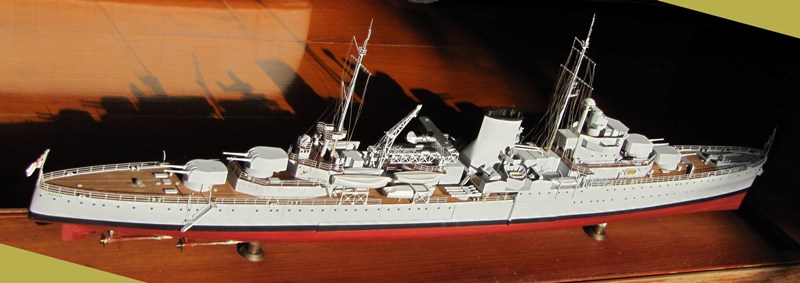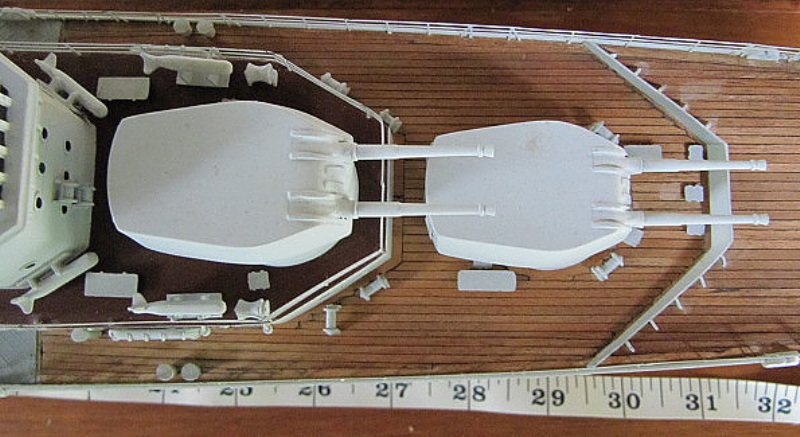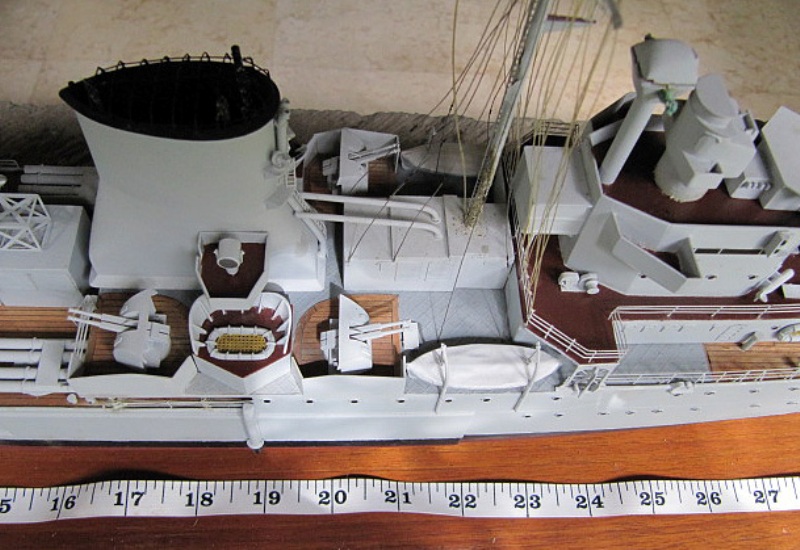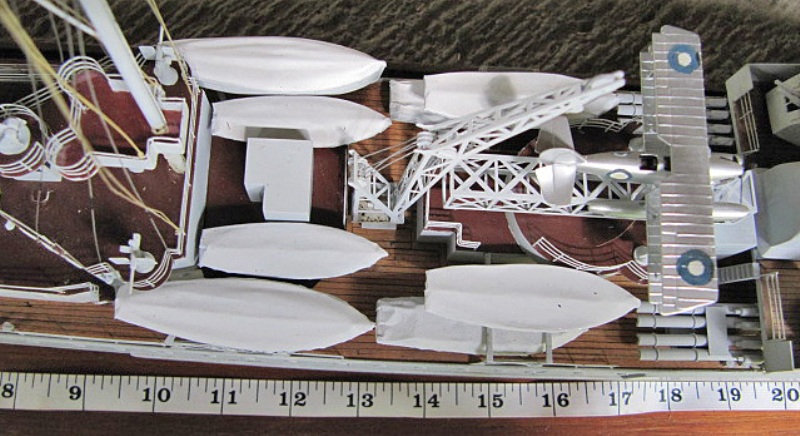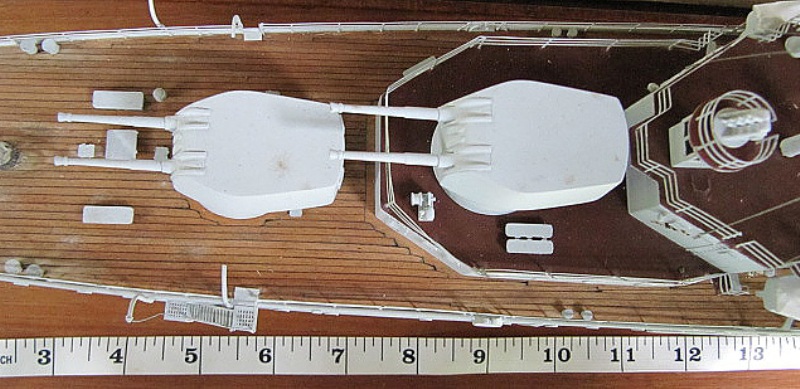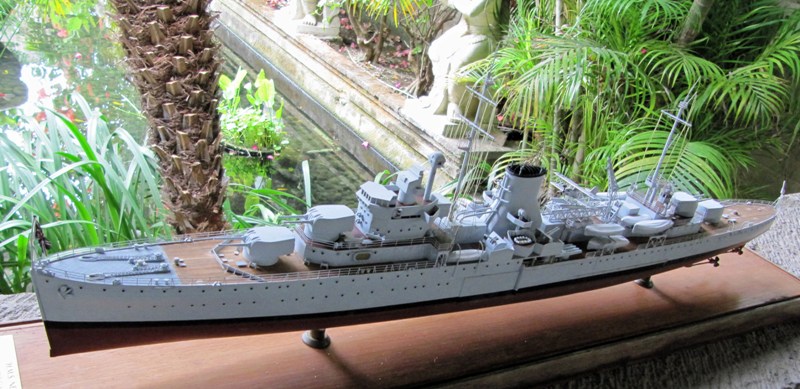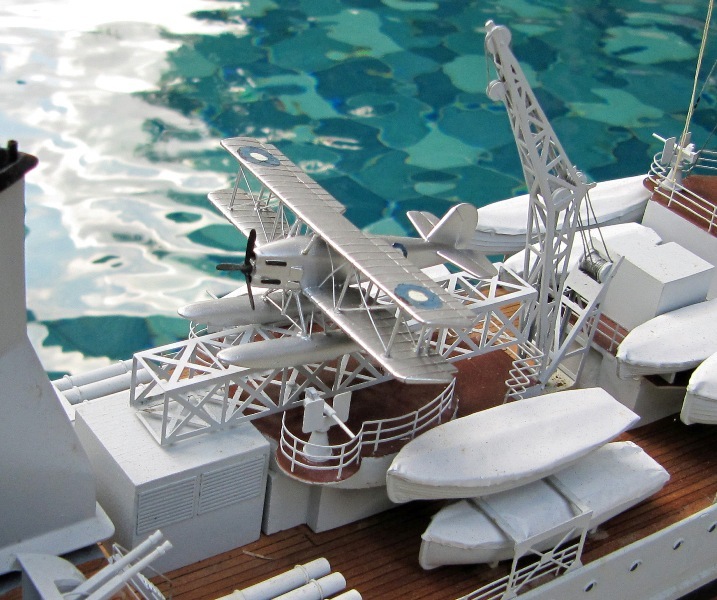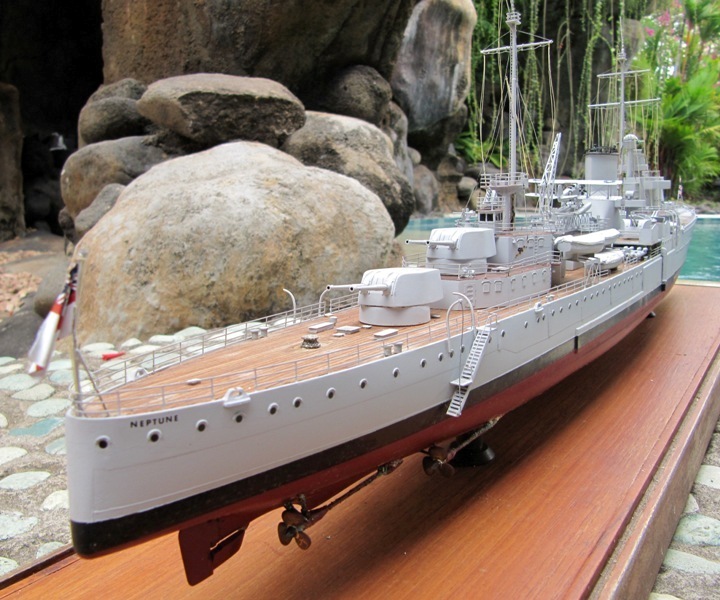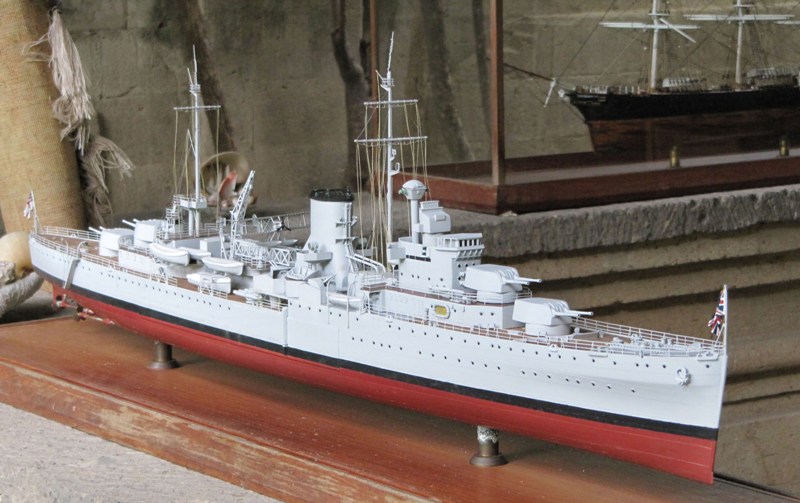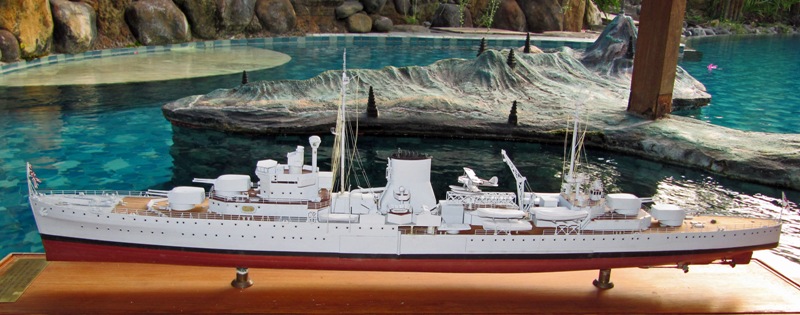 John Pechell Parker served on HMS Neptune, joining the ship during 1937 as a Paymaster Lieutenant and, by late 1940, due to the ill health of the then Paymaster Commander, he was temporarily promoted to that rank. He was acting Commander until the arrrival in March 1941 of 35 year old Paymaster Commander John Harvey McGregor, father of Neptune Association Chairman, John McGregor and his brother, fellow Association member, Richard. John Parker served under John McGregor until leaving the ship in July 1941. John McGregor was lost with HMS Neptune in December 1941.
Having spent four years aboard HMS Neptune, John Parker always retained a great affection for the ship and his friends aboard her. In consequence, his son Andrew had this large splendid model made in Hong Kong by modelmakers Zakoske as a gift to his father. Andrew Parker describes the circumstances of its creation here:
"In the early 1970s I worked in a building next door to the Peninsula Hotel in Kowloon. In their arcade they had a show window of Ships models by Zakoske. There were the usual ones of Victory, Cutty Sark and Endeavour but also some very unusual ones and there was a sign to say that models could be built to order to Museum standards.
In the early 1980s I thought it might be nice to have a model made for my Father’s 70th birthday and asked him what was his favourite ship that he had served on. He said Neptune.
By this time I was working in Singapore so wrote to Zakoske to see if he could build Neptune. Slightly skeptical as Zakoske was an American. He wrote back to say that he was very busy with building models for the constant launching of Super Tankers for Y.K.Pao and C.Y. Tung ( who would give a model of the ship to the person who launched it ) but yes he would be interested in building Neptune and that he would obtain the Admiralty plans as he had already built other RN ships for RN Museums in the UK.
It actually took nearly three years to complete Neptune and I almost gave up hope of her ever being completed !
During those three years I visited Zakoske on one occasion and he had his workshop in the back streets of Sham Shui Po and all the workers he employed were disabled people.
My Father subsequently visited Zakoske on several occasions during the three years, as my Sister was at that time living in Hongkong.
During the visits Zakoske and My Father would discuss various details of Neptune and how these differed from the Admiralty plans.
Sadly Zakoske died shortly after Neptune was completed."
It now resides in Bali with Andrew who has kindly supplied these photographs.
| 

